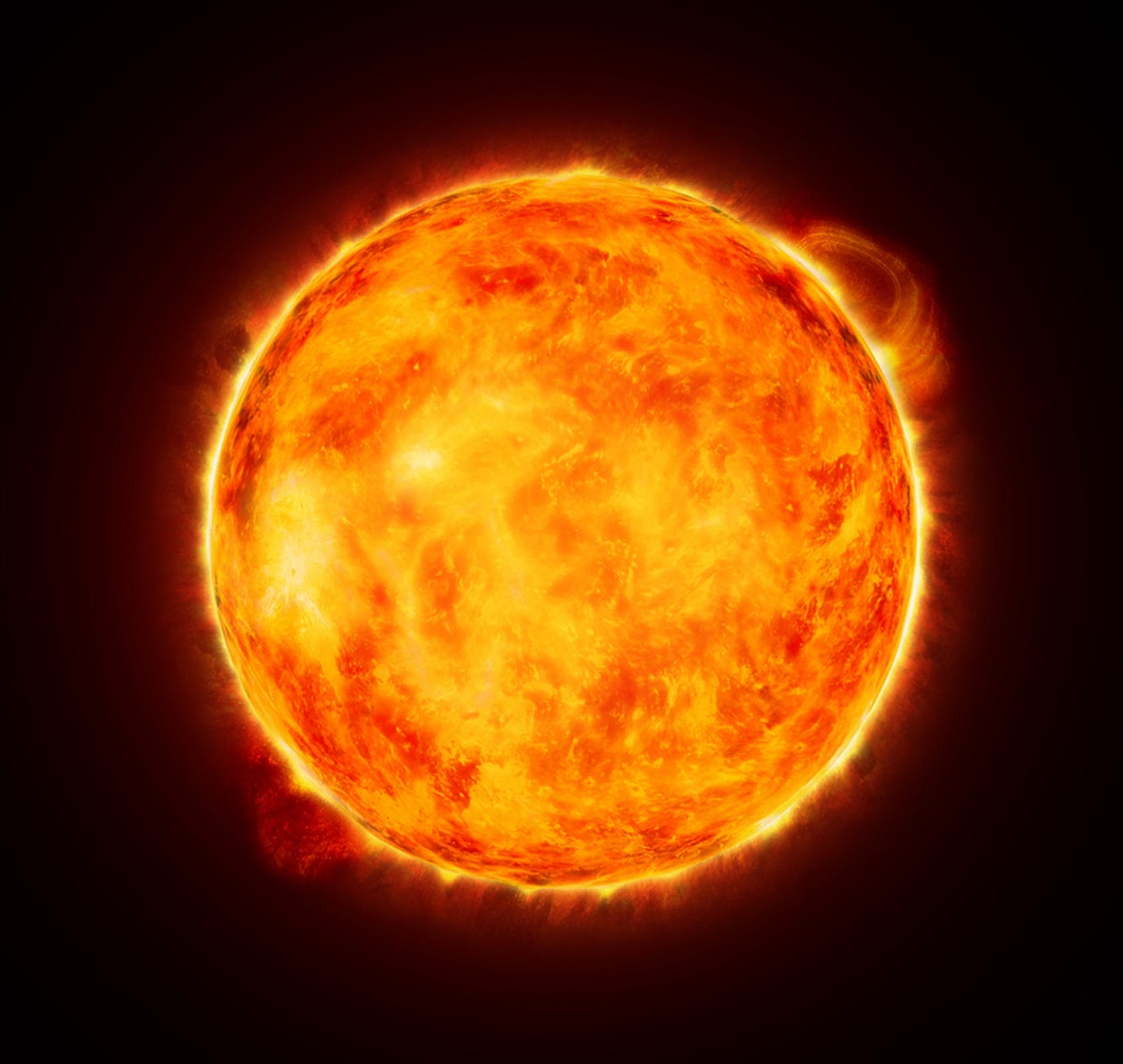In today's TPOM, we will learn more important physics definitions along with a surprise or seven. We left off with velocity in our last essay. Let's start with speed and compare and contrast speed and velocity.
Speed
Speed is a quantitative measure of how quickly something is moving. Speed is a scalar quantity.
Let's compare and contrast speed and velocity.
Speed measures how fast something is moving, and velocity measures how fast and in what direction something is moving.
Speed is a scalar quantity, and velocity is a vector quantity.
Speed attends the rate of change of the object concerning distance, and velocity attends the rate of change concerning displacement.
An object's speed will never be zero, and a moving object's velocity can be zero.
Speed is the way we indicate an object's rapidity, and velocity is the way we indicate an object's rapidity and position.
Speed is defined as the distance covered by an object in unit time, and velocity is defined as the displacement of an object in unit time.
It's pretty interesting to consider. What do you think? As you might expect, there is more to the story of speed and velocity. For now, try to familiarize yourself with the critical distinctions made above. Play with the concepts and apply some of the thinking tools to them, and over time, you will get a feel for the critical areas of each distinction.
Distance & Displacement
Distance is the total amount of movement of an object with no concern for direction. Distance deals with how much ground an object has covered without regard to its beginning (starting) or ending points. Displacement is simply the change in position of an object. Displacement is a vector quantity and, as such, has both direction and magnitude. In the future, we will cover some problems dealing with these concepts. For now, try to familiarize yourself with the important aspects. Next, let's compare and contrast distance and displacement.
Distance is the complete path between any two points, and displacement is the direct length between any two points derived by measuring the minimum path between the two points.
Distance is a scalar quantity because it only relies upon the complete path, i.e., magnitude, and displacement is a vector quantity because it is dependent upon both direction and magnitude.
Distance can only be expressed in or have positive values, and displacement can be expressed by or have positive, neutral (zero), or negative values.
Distance is written primarily as d, and displacement is written primarily as s.
Distance is not indicated with an arrow, and displacement is always expressed with an arrow.
Distance problems will give complete route information, and displacement problems will not provide complete route information.
Distance can only be measured along a non-straight path, and displacement can only be measured along a straight path.
Distance is path-dependent, and displacement is path-independent.
Distance is calculated as speed * time, and displacement is calculated as velocity * time.
Try to ask yourself some critical questions regarding distance and displacement. See if you can probe at the areas where they meet and create questions that allow you to learn to deal with those critical areas of definitional importance. There will be more to come regarding these two concepts. Spend some time with them and integrate them into how you think and speak of reality, and soon, you will become highly proficient at differentiating between these two concepts.
SI: Setting the Scientific Standard of Measurement
The SI unit is an abbreviation of the French term Système International. The International System of Units (SI) is the metric system used universally as a standard for measurements.
This will be a little more technical than we have been so far in our journey together. Take it all with a grain of salt and know that you will completely understand what you may not currently understand very soon.
The following will be reposted here basically as is minus some grammatical adjustments (very minor - blame NIST for any errors from this point onward!) for clarity and a few statements to that end as well; it is taken from the NIST website located at: https://www.nist.gov/
The Seven Defining Constants
The SI rests on a foundation of seven (7) defining constants: the cesium hyperfine splitting frequency, the speed of light in vacuum, the Planck constant, the elementary charge (i.e. the charge on a proton), the Boltzmann constant, the Avogadro constant, and the luminous efficacy of a specified monochromatic source. Definitions of all seven (7) SI base units are expressed using an explicit-constant formulation and experimentally realized using a specific mises en pratique (practical technique).
The seven SI base units are comprised of:
The International System of Units (SI), commonly known as the metric system, is the international standard for measurement. The International Treaty of the Meter was signed in Paris on May 20, 1875, by seventeen countries, including the United States, and is now celebrated around the globe as World Metrology Day. NIST provides official U.S. representation in the various international bodies established by the Meter Convention: CGPM - General Conference on Weights and Measures; CIPM - International Committee for Weights and Measures; and BIPM- The International Bureau of Weights and Measures.
The SI is made up of 7 base units that define the 22 derived units with special names and symbols, which are illustrated in NIST SP 1247, SI Base Units Relationship Poster. The SI plays an essential role in international commerce and is commonly used in scientific and technological research and development. Learn more about the SI in NIST SP 330 and SP 811.
Length
Length is expressed as - meter (m).
The meter (m) is defined by taking the fixed numerical value of the speed of light in vacuum c to be 299,792,458 when expressed in the unit m s−1, where the second is defined in terms of ∆νCs. The meter was once defined by a physical artifact - two marks inscribed on a platinum-iridium bar. The Length - Evolution from Measurement Standard to a Fundamental Constant explains the evolution of the definition of the meter. Follow these changes over time in the NIST Length Timeline.
From the meter, several other units of measure are derived, such as the:
Unit of speed is the meter per second (m/s). The speed of light in vacuum is 299,792,458 meters per second.
Unit of acceleration is the meter per second per second (m/s2[squared]).
Unit of area is the square meter (m2[squared]).
Unit of volume is the cubic meter (m3[cubed]). The liter (1 cubic decimeter), although not an SI unit, is accepted for use with the SI and is commonly used when measuring fluid volume, but is also used when measuring gases and solids.
Time
Time is expressed as - second (s).
The second (s) is defined by taking the fixed numerical value of the cesium frequency ∆νCs, the unperturbed ground-state hyperfine transition frequency of the cesium-133 atom, to be 9,192,631,770 when expressed in the unit Hz, which is equal to s−1(s to negative -1].
The number of periods or cycles per second is called frequency. The SI unit for frequency is the hertz (Hz). One hertz is the same as one cycle per second. Standard frequencies and the correct time are broadcast by radio stations WWV and WWVB in Colorado, and WWVH in Hawaii. NIST delivers digital timing signals by telephone and through the Internet.
Official U.S. Government time is provided by NIST and USNO. NIST also offers an Internet Time Service (ITS) and an Automated Computer Time Service (ACTS) that allow setting of computer and other clocks through the Internet or over standard commercial telephone lines. Free software for using these services on several types of popular computers can be downloaded there. Information about these services can be found on the Time and Frequency Division Website.
Mole
The amount of substance is measured by the determiner - mole.
One mole (mol) contains exactly 6.02214076 × 1023 elementary entities. This number is the fixed numerical value of the Avogadro constant, NA, when expressed in the unit mol−1 and is called the Avogadro number. The amount of substance, symbol n, of a system is a measure of the number of specified elementary entities. An elementary entity may be an atom, a molecule, an ion, an electron, any other particle or specified group of particles.
When the mole is used, the elementary entities must be specified and may be atoms, molecules, ions, electrons, other particles, or specified groups of such particles.
The SI unit of concentration (of amount of substance) is the mole per cubic meter (mol/m3[cubed]).
Electric Current
The electric current is expressed as - ampere (A).
The ampere is defined by taking the fixed numerical value of the elementary charge e to be 1.602176634 × 10−19 (10 to -19) when expressed in the unit C, which is equal to A s, where the second is defined in terms of ∆νCs.
The SI unit of electric potential difference is the volt (V) 1 V = 1 W/A.
The SI unit of electric resistance is the ohm (Ω). 1 Ω = 1 V/A.
When spelled out in full, unit names are treated like ordinary English nouns. Thus the names of all units start with a lower-case letter, except at the beginning of a sentence or in capitalized material such as a title. In keeping with this rule, the unit symbols for ampere is a capitalized "A" and volt is capitalized "V" because both unit names are based on the names of scientists.
Andre Marie Ampere (1775 - 1836) Name endures in everyday life in the ampere, the unit for measuring electric current. These biographical website can help you learn more:
Alessandro Volta (1745 - 1827) Name endures in everyday life in the volt, the derived unit for measuring electric potential, and also the inventor of the first battery. These biographical website can help you learn more:
Engineering and Technology History Wiki Massachusetts Institute of Technology (MIT) LibrariesSpark Museum of Electrical Invention.
Temperature
Temperature is expressed as - kelvin (K).
The kelvin (K) is defined by taking the fixed numerical value of the Boltzmann constant k to be 1.380 649 ×10−23 (10 to -23) when expressed in the unit J K−1 (K to -1), which is equal to kg m2 (m squared) s−2 (s to -2) K−1 (K to -1), where the kilogram, meter and second are defined in terms of h, c, and ∆νCs. The temperature 0 K is commonly referred to as "absolute zero." On the widely used Celsius temperature scale, water freezes at 0 °C and boils at about 100 °C. One Celsius degree is an interval of 1 K, and zero degrees Celsius is 273.15 K. An interval of one Celsius degree corresponds to an interval of 1.8 Fahrenheit degrees on the Fahrenheit temperature scale.
The standard temperature at the triple point of water is provided by a special cell, an evacuated glass cylinder containing pure water. When the cell is cooled enough so that a mantle of ice forms around the reentrant well, the temperature at the interface of solid, liquid, and vapor is 273.16 K. Thermometers to be calibrated are placed in the reentrant well.
Luminous Intensity
Luminous intensity is expressed as - candela (cd).
The candela (cd) is defined by taking the fixed numerical value of the luminous efficacy of monochromatic radiation of frequency 540 × 1012 Hz, Kcd, to be 683 when expressed in the unit lm W−1 (W to -1), which is equal to cd sr W−1 (W to -1), or cd sr kg−1 (kg to -1) m−2 (m to -2) s3 (s cubed), where the kilogram, meter and second are defined in terms of h, c, and ∆νCs.
Radiation at frequencies other than 540 x (10 to the 12th) Hz is also measured in candelas in accordance with the standard luminous efficiency, V (λ), curve that peaks at 540 x 1012 Hz (yellow-green). Learn more about the realization of the candela and luminance (candela per square meter).
Mass
Mass is expressed as - kilogram (kg).
The kilogram (kg) is defined by taking the fixed numerical value of the Planck constant h to be 6.62607015 ×10−34 (10 to -34) when expressed in the unit J s, which is equal to kg m2 (m squared) s−1 9s to -1), where the meter and the second are defined in terms of c and ∆νCs.
The primary standard of mass for this country is United States Prototype Kilogram 20, which is a platinum-iridium cylinder kept at NIST. The kilogram, originally defined as the mass of one cubic decimeter of water at the temperature of maximum density, was known as the Kilogram of the Archives.
It was replaced after the International Metric Convention in 1875 by the International Prototype Kilogram, which became the unit of mass without reference to the mass of a cubic decimeter of water or to the Kilogram of the Archives. Each country that subscribed to the International Metric Convention was assigned one or more copies of the international standards; these are known as National Prototype Meters and Kilograms. Learn more about the history and current definition of the kilogram.
Among the SI base units, the kilogram (kg) is the only one whose name and symbol, for historical reasons, include a prefix. "Kilo" the SI prefix for 1000 or 10 (to the 3rd). Names and symbols for decimal multiples and submultiples of the unit of mass are formed by attaching prefix names to the unit name "gram," and prefix symbols to the unit symbol "g." Learn more about this historical quirk.
End of NIST repost.
Don't Panic
Remain calm! The above SI list is so that you have all of the needed scientific information in one location. There is no need to memorize at this point. The main thing to do is to familiarize yourself with these constants and to ask critical questions about them from as many angles as you can contrive. We will go into each of these types of measurement in philosophical detail at a later time, but for now, concern yourself with gaining familiarity. Think about what each of these types of measurements attends and how they may or may not convert to each other, what they mean, how they are used, and why they are the exact numbers they are. What is the point of it all? Look at us humans on this planet, Earth, floating through space at a rather high speed at 1,100ish mph or 1700ish kph, mind you! Why should you care? Maybe you shouldn't? Maybe you should? But if you should, a great reason would be to better understand what an amazing thing this reality is, and, of course, who knows what discoveries are ahead of each of us as a result of showing up and giving a hoot about what is going on with the amazing little space rock we travel on.
Important
Note, for those of you who have an interest in or currently run a snake circus, you will most certainly need to grasp the causal mechanisms beneath the materials in the causality portion of TPOM. Snakes are not known for their logic, so if you want to get ahead of their responses (often very poor) to heights, mechanized circular motion, clowns, clown snakes, clowns with clown snakes stuffed into a little car, inversion, flipping, tumbling, being tumbled, falling from great heights, and filling out tax documents along with dealing with humans that can't take a joke or that don't have any discernable sense of humor then good luck without a good grasp of snake psychology, the tax system, and causality! Without these, I wouldn't expect great outcomes.
We will continue.
B.S.R.






